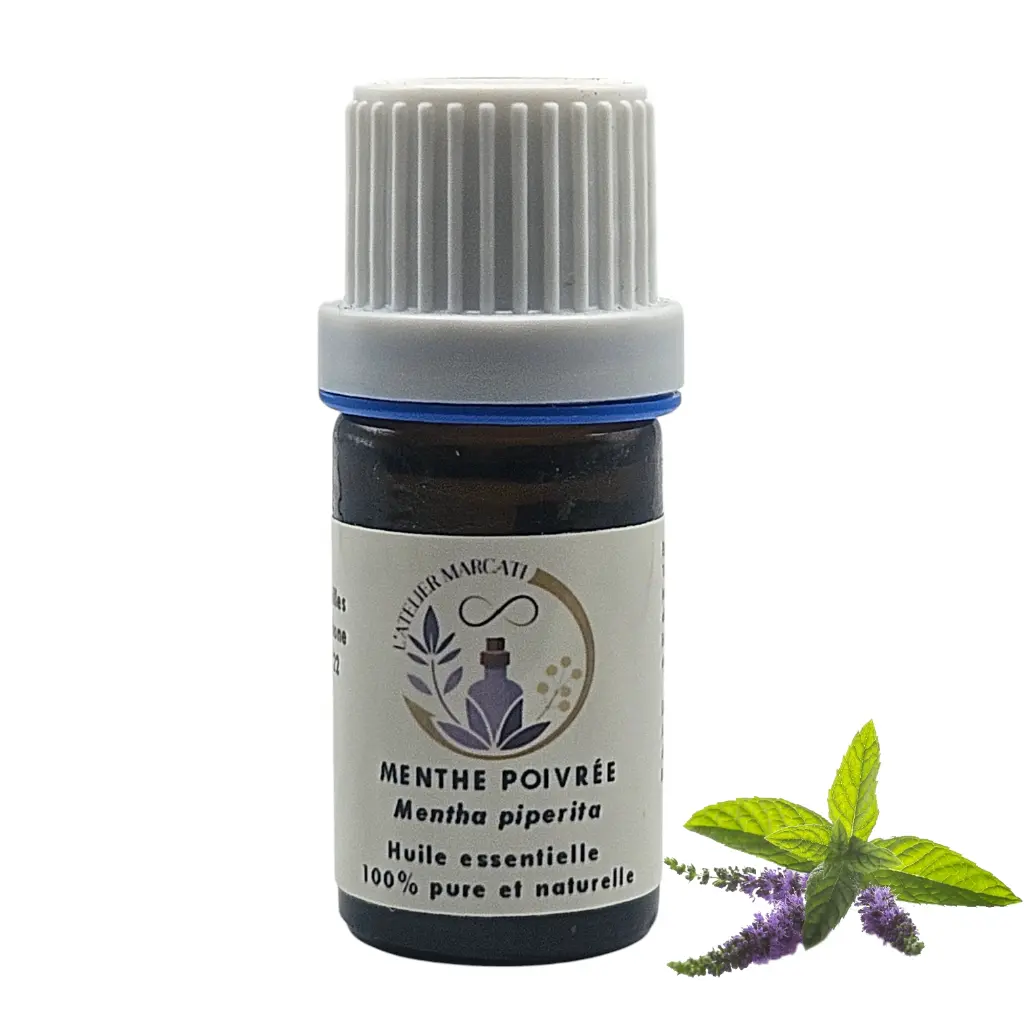Peppermint essential oil
Botanical name: Mentha piperita

Chemotype and indications
Identity card
Name: Peppermint
Botanical name: Mentha piperita
Distilled part: Flowering plant
Botanical Family: Lamiaceae
Origin: France
Chemical composition:
- Ketones: Menthone (20 to 30% and up to 65%): Piperitone, Pulegone
- Sulfur Compounds
- Coumarines
- Esters: Menthyl Acetate
- Monoterpenes: Alpha and Beta Pinene, Limonene
- Monoterpenols: Menthol (38 to 48%), Piperitol
- Oxides: 1,8 Cineole
- Sesquiterpenes: Beta Caryophyllene
Physical properties and therapeutic indications
- Aerophagia*, Hepato-pancreatic stimulant*, indigestion*, nausea*
- Anesthetic*, local anesthetic*
- Asthenia*, Fatigue*, General stimulant*
- Headache*, Migraine*
- Dyspepsia*
- Eczema*, Urticaria*, Shingles*
- Viral hepatitis*
- Neuralgia*
- Viral neuritis (optic nerve and others)*
- Sciatica*
- Virucide*
- Vasoconstrictor*
Emotional, psychological properties and therapeutic indications
- Soothing for explosive and irritable characters (hysteria)
- Excessive emotionality
- Relaxing
- Promotes concentration (memory)
- Helps with exhaustion (mental and cerebral stimulant)
Additional information
Danger:
HE toxic at high doses
Very irritating (due to Menthol) to the skin and mucous membranes
Avoid application to the chest due to its cooling effect.
Risk of insomnia
Can cut off menstrual flow for 48 hours
Strengthens and stimulates virility
Do not use during hay fever
High dose: Exciting, trembling, then narcotic, followed by a depressive phase
FORBIDDEN:
Babies up to 3 years old: risk of laryngeal or nasal spasms which can cause breathing to stop, and then death!
For children up to 6 years of age for oral absorption
During homeopathic treatment
pre and diabetic
Epileptic
NEVER ON BROADCAST
Legend: * powerful, ** very powerful; *** extremely powerful (power value for the associated pathology)
Reference and bibliographic source: Lily BAYER and Dr Hervé STAUB, (2013) "In-depth Treatise on Phyto and Aromatherapy", Ed. Grancher. p. 584.
THE INDICATIONS IN AROMATHERAPY AND THE USE OF ESSENTIAL OILS DO NOT CONSTITUTE A MEDICAL DIAGNOSIS AND DO NOT REPLACE THE ADVICE OF A DOCTOR OR MEDICAL TREATMENTS!



